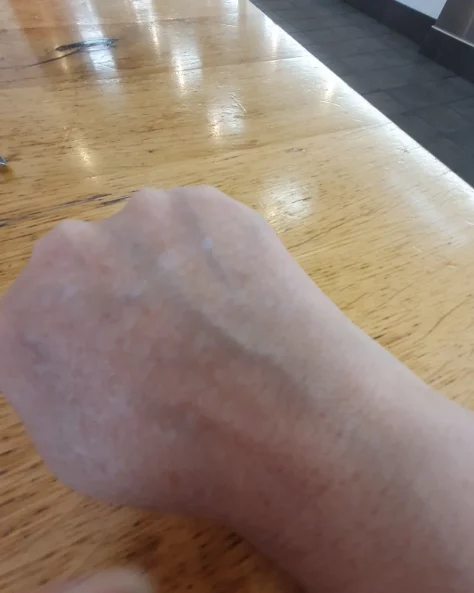
VITILIGO ANOTHER AUTOIMMUNE CONDITION
This post may contain affiliate links
Vitiligo is my second autoimmune condition. My rheumatologist doctor confirmed this in March of 2022. I have had white patches on my hands for years and never put anything on them. Now I put a high SPF 30+ daily in spring and winter and an SPF 50+ in the summer and autumn. I can only use basic products, nothing with perfume or heavily scented.

The left hand I had white patches since I was a child and never took any notice on them.

The right hand was normal up until the last few years, it is getting more white patches than ever before.
Overview
Vitiligo is a long-term condition where pale white patches develop on the skin. It’s caused by the lack of melanin, which is the pigment in skin. Vitiligo can affect any area of skin, but it commonly happens on the face, neck and hands, and in skin creases. The pale areas of skin are more vulnerable to sunburn, so it’s important to take extra care when in the sun and use a sunscreen with a high sun protection factor (SPF).
Symptoms Of Vitiligo
The areas of skin most commonly affected by vitiligo include:
- mouth and eyes
- fingers and wrists
- armpits
- groin
- genitals
- inside your mouth
It can also sometimes develop where there are hair roots, such as on your scalp. The lack of melanin in your skin can turn the hair in the affected area white or grey.
Vitiligo often starts as a pale patch of skin that gradually turns completely white. The centre of a patch may be white, with paler skin around it. If there are blood vessels under the skin, the patch may be slightly pink, rather than white. The edges of the patch may be smooth or irregular. They’re sometimes red and inflamed, or there’s brownish discolouration (hyperpigmentation). Vitiligo does not cause discomfort to your skin, such as dryness, but the patches may occasionally be itchy. The condition varies from person to person. Some people only get a few small, white patches, but others get bigger white patches that join up across large areas of their skin.
About 15 to 25 percent of people with vitiligo are also affected by at least one other autoimmune disorder, particularly autoimmune thyroid disease, rheumatoid arthritis, type 1 diabetes, psoriasis , pernicious anemia, Addison disease, systemic lupus erythematosus, celiac disease, Crohn disease, or ulcerative colitis.






No Comments